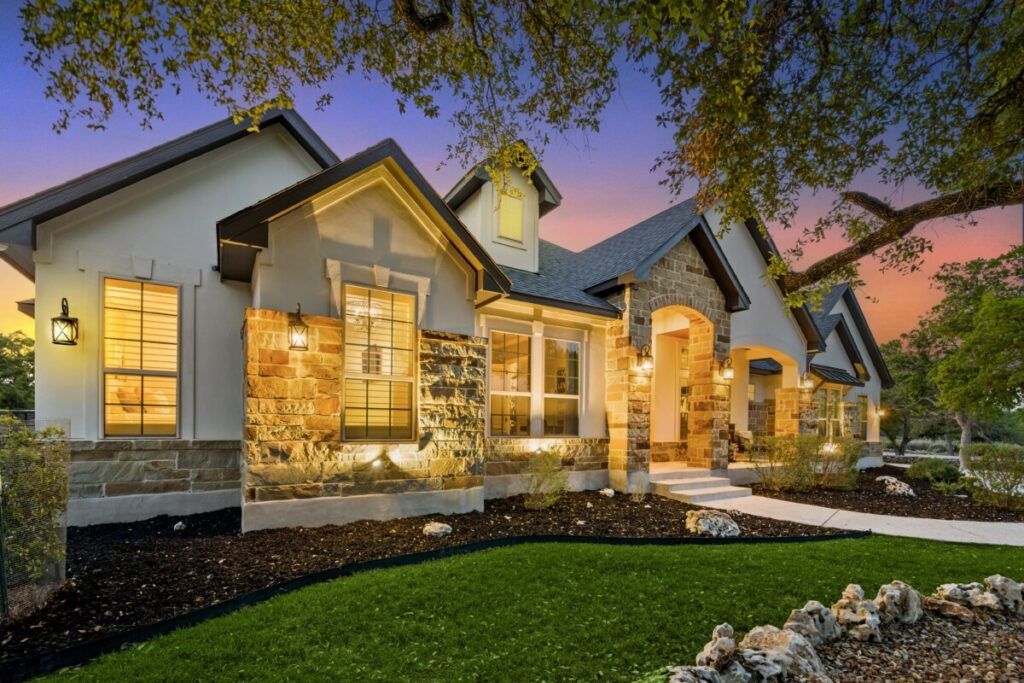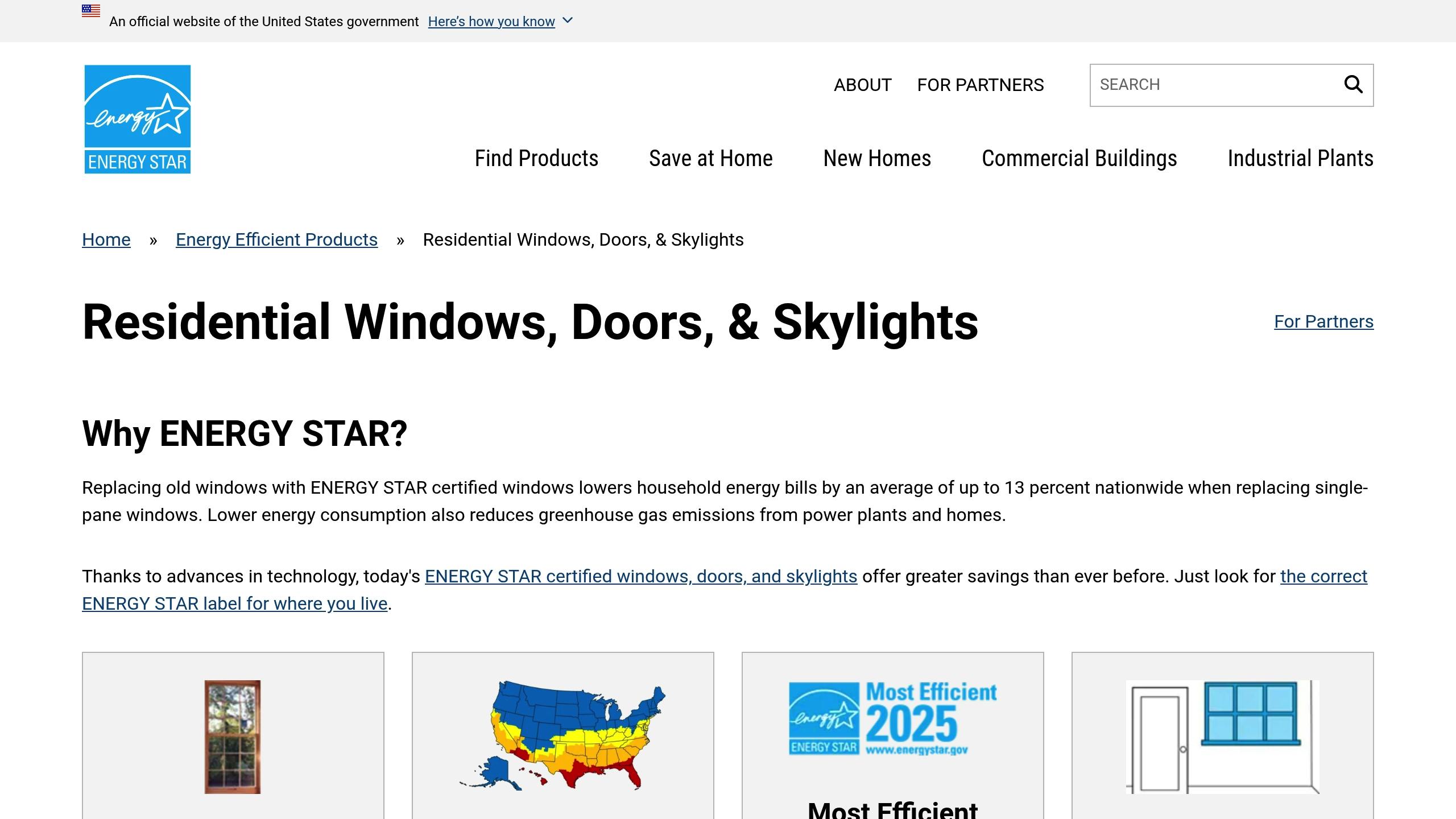What U-Factor Means for Window Efficiency in Frisco, Texas
Did you know that up to 30% of your Frisco home’s heating and cooling energy can escape through windows? Choosing windows with the right U-Factor can help you save energy, lower your bills, and keep your home comfortable year-round.
What is U-Factor? It measures how well a window prevents heat loss – the lower the number, the better the insulation. For example:
- Double-pane Cardinal 452 with argon windows: U-Factor 0.20-0.30 (Best insulation)
- Double-pane with Low-E coating: U-Factor 0.30-0.40 (Great choice)
- Single-pane windows: U-Factor 0.80-1.20 (Poor insulation)
Benefits of Low U-Factor Windows:
- Lower energy bills: Reduces heating and cooling costs.
- Better comfort: Maintains consistent indoor temperatures.
- Improved HVAC efficiency: Less strain on your system.
To choose the best windows, consider your climate, glass type (e.g., Low-E or triple-pane), and regional energy standards like ENERGY STAR. Investing in windows with a low U-Factor may cost more upfront but provides long-term savings and comfort.
Understanding U-Factor
U-Factor Basics
U-Factor measures how well a window prevents heat from escaping, expressed in BTU/hr·ft²·°F. Think of it as a heat-loss score – the lower the number, the better the insulation.
For example, a single-pane window typically has a U-Factor of around 1.0, while a high-performance double-pane window can go as low as 0.20. That’s up to 80% less heat transfer! The standardized rating system helps compare performance across different window types.
U-Factor Rating System
Here’s a quick look at U-Factor ranges for various window types:
| Window Type | U-Factor Range | Performance Level |
|---|---|---|
| Double Pane 452 with gas fill | 0.20 – 0.30 | Excellent |
| Double-pane with low-E coating | 0.30 – 0.40 | Very Good |
| Standard double-pane | 0.40 – 0.55 | Good |
| Single-pane | 0.80 – 1.20 | Poor |
Modern high-performance windows usually fall between 0.20 and 0.40. Even small changes make a big difference – lowering a U-Factor from 0.50 to 0.30 can cut heat transfer by up to 40%.
Windows with lower U-Factors help maintain a stable indoor temperature, making heating in winter and cooling in summer more efficient. This not only keeps your home comfortable year-round but also reduces energy use, making U-Factor an essential consideration for homeowners.
What is U-Factor for Windows?
U-Factor and Energy Performance
Let’s take a closer look at how the U-Factor directly affects energy performance in your home.
Heat Loss and U-Factor
The U-Factor of a window plays a key role in determining how well your home retains heat. Choosing windows with a lower U-Factor reduces heat loss, which means your HVAC system doesn’t have to work as hard. This not only saves energy but also leads to noticeable cuts in your energy bills.
Low U-Factor Window Results
Switching to windows with a lower U-Factor can bring clear, measurable benefits. Here’s what real customers have experienced:
“We are very happy with the quality of the windows, the installation process, and now that a little time has passed, the reduced energy usage!” – Ben Sheppard [1]
Here’s how these windows can make a difference:
| Benefit | Impact |
|---|---|
| Energy Bills | Lower monthly heating and cooling costs |
| Temperature Control | More consistent indoor temperatures with fewer hot and cold spots |
| HVAC Efficiency | Less strain on your heating and cooling systems |
| Comfort Level | Better insulation from outdoor temperature changes |
These benefits show how investing in windows with an optimal U-Factor can lead to lower energy use, improved comfort, and a more balanced indoor environment. Over time, the savings and comfort make the upgrade worthwhile.
What Affects U-Factor
Understanding the factors that influence the U-Factor can help you make better decisions when aiming for energy-efficient windows.
Glass Options
The type of glass plays a big role in determining a window’s U-Factor. Modern glass technologies use coatings and treatments to minimize heat loss and improve efficiency. For example, Low-E glass has a thin metallic coating that reflects indoor heat back inside, while spectrally selective glass is designed to manage solar heat gain without cutting down on natural light. Tinted glass, on the other hand, absorbs solar heat and reduces glare.
Here’s a quick breakdown:
| Glass Type | Key Features |
|---|---|
| Low-E Glass | Reflects indoor heat with a microscopic metallic coating |
| Spectrally Selective Glass | Controls solar heat gain while maintaining good visibility |
| Tinted Glass | Absorbs solar heat and cuts down on glare |
In addition to the glass type, the number of layers and the gas used between them also impact performance.
Glass Layers and Fills
Adding more layers of glass and filling the gaps with insulating gas reduces the U-Factor even further. Double-pane windows provide better insulation compared to single-pane designs. The type of gas used between the panes, such as argon, also makes a difference.
These features work together to lower the U-Factor, improving energy efficiency and indoor comfort.
U-Factor Guidelines by Region
The U-Factor rating needed for windows varies across the United States, depending on the climate. Knowing these regional requirements is key for homeowners looking to upgrade their windows effectively.
ENERGY STAR Requirements
ENERGY STAR sets U-Factor guidelines based on climate zones. In colder areas, windows with lower U-Factors are recommended to minimize heat loss and keep indoor spaces comfortable. These guidelines are designed to improve energy efficiency, and local building codes often align with or expand on these standards to ensure windows perform well in specific climates.
Local Code Requirements
Many local building codes, often based on the International Energy Conservation Code (IECC), enforce U-Factor ratings tailored to specific climate zones. These codes may also require permits and certified installers for compliance. The benefits of adhering to these standards are clear in homeowner feedback. For instance:
“My windows were installed last year and I have seen a sizable difference in my electric bill this summer…I received many bids for window replacement prior to choosing the Optimal team and found them to offer the best value and service.” – Jen M [1]
Since up to 30% of a home’s heating and cooling energy can escape through windows [1], choosing windows with the right U-Factor for your climate is a smart investment.
Selecting Windows by U-Factor
U-Factor and Other Ratings
When choosing energy-efficient windows for your Frisco home, the U-Factor is just one part of the equation. Another key metric to consider is the Solar Heat Gain Coefficient (SHGC), which measures how well a window blocks heat from sunlight. While the U-Factor helps reduce heat loss, the SHGC controls how much solar heat enters your home.
Understanding both ratings is essential for making smart choices. For instance, in colder northern climates, you might prefer windows with a low U-Factor to minimize heat loss, paired with a higher SHGC to take advantage of the sun’s warmth during winter. Check for the NFRC label on windows – it provides a clear, standardized display of these ratings. Alongside performance, weighing the cost-effectiveness of different options is crucial.
Price vs. Energy Savings
Windows with a low U-Factor often come with a higher initial price tag, but they can lead to significant savings on energy bills over time. Many homeowners report noticeable reductions in heating and cooling costs after installing energy-efficient windows. Since windows can account for up to 30% of a home’s heating and cooling energy loss [1], investing in better-performing options can pay off in the long run.
Optimal Windows Products
Finding the right provider is just as important as choosing the right windows. Optimal Windows offers energy-efficient options featuring Cardinal Lo-E glass, designed to achieve excellent U-Factor and SHGC ratings. As an FGIA Certified installer, they provide products tailored to meet the specific demands of different regional climates.
Their selection includes various frame materials and glass packages, all designed to meet specific energy efficiency needs. For example, their Cardinal Quad 452 Lo-E glass delivers outstanding insulation while maintaining clear, unobstructed views. Customers frequently highlight the economic benefits and improved aesthetics these windows bring to their homes.
Summary
Understanding U-Factor is key when choosing energy-efficient windows. A lower U-Factor means better insulation, which helps cut energy costs and keeps your home more comfortable. The best windows pair low U-Factor ratings with the right Solar Heat Gain Coefficient (SHGC) values tailored to your climate. While energy-efficient windows may cost more upfront, they can lead to noticeable savings on energy bills in the long run.
For homeowners looking for efficient window solutions, Optimal Windows offers products featuring Cardinal 452 Lo-E glass technology. Their team ensures each installation meets regional energy requirements and maximizes energy efficiency.
Proper installation is just as important as the window itself. Certified professionals ensure your windows are installed correctly, helping them perform at their best, save energy, and last longer. This combination of quality products and expert installation delivers both comfort and savings.
Enhance your home with high-performance energy-efficient windows from Optimal Windows, Frisco’s trusted window installation experts. Our FGIA-certified team delivers precision installations and top-tier window replacements.
Get started with a free window consultation in Frisco today!
📞 Call us at 972.768.1999| 📍 Proudly serving Frisco, TX












